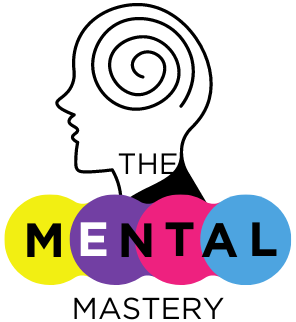Mindfulness for Beginners: A Step-by-Step Guide to Cultivating Awareness
In today’s fast-paced world, mindfulness has emerged as a popular and effective tool for managing stress, improving mental health, and enhancing overall well-being. But for many, the concept of mindfulness can seem elusive or even intimidating. This guide aims to break down the fundamentals of mindfulness, providing beginners with a step-by-step approach to cultivating awareness and integrating mindfulness into everyday life.

Understanding Mindfulness
Being completely present in the moment while paying attention to your thoughts, feelings, sensations, and surroundings without passing judgment is the practice of mindfulness. It helps you stay rooted in the present moment by encouraging you to observe instead of react. Mindfulness, which has its roots in traditional meditation techniques, has drawn a lot of interest in modern psychology due to its many advantages for mental health.
According to research, practicing mindfulness can enhance emotional control, concentration, and general quality of life in addition to reducing the symptoms of stress, anxiety, and depression (Keng, Smoski, & Robins, 2011). People can better control their negative emotions and build a positive relationship with their thoughts by integrating mindfulness into their everyday activities.
Why Cultivating Awareness Matters for Mental Health
Mindfulness revolves around awareness. Developing awareness improves your capacity for concentration, stress reduction, and maintaining awareness of your inner sensations. This capacity to stay in the present moment can be a life-changing tool for people dealing with mental health issues like depression or anxiety.
According to a study, practicing mindfulness on a regular basis significantly lowers stress and anxiety levels (Goyal et al., 2014). You can overcome repetitive thought patterns that worsen mental health problems by learning to focus your attention in the present.
Step-by-Step Guide to Cultivating Mindfulness
Step 1: Start with Breathing Exercises
Breathing is a foundational aspect of mindfulness. Focusing on your breath helps you centre yourself and establish a connection with the present moment. Begin by finding a quiet space where you can sit comfortably. Close your eyes and take slow, deep breaths, paying attention to the sensation of air entering and leaving your body.
If your mind starts to wander, gently guide your attention back to your breathing. This simple exercise can help you build the habit of bringing your focus back when distractions arise, which is critical for mindfulness practice.
Step 2: Practice Mindful Observation
Mindful observation involves paying close attention to the small details of your environment. Choose a natural object, such as a flower, tree, or even a cup of tea. Take a few moments to observe it without judgment. Notice its shape, colour, texture, and smell. Focus entirely on the object in front of you.
This exercise encourages you to slow down and appreciate the details of your surroundings, helping to cultivate a deeper sense of presence.
Step 3: Engage in Body Scan Meditation
Body scan meditation is a technique used to tune into the physical sensations throughout your body. Start by lying down in a comfortable position. Close your eyes and focus on each part of your body, starting from your toes and slowly moving upward to your head. Pay attention to how each part feels without trying to change anything.
The body scan meditation helps you become more aware of physical sensations, releasing tension and reducing stress. Studies suggest that this practice can also increase interoceptive awareness, improving emotional regulation and mental health (Mehling et al., 2012).
Step 4: Incorporate Mindfulness into Daily Activities
Mindfulness doesn’t have to be confined to meditation sessions. You can practice it during everyday activities like walking, eating, or even doing chores. Focus on the task at hand, noticing the sensations, smells, and movements involved. For example, when washing dishes, pay attention to the feeling of water on your hands, the sound of plates clinking, and the rhythm of your movements.
This simple shift in focus allows you to turn mundane tasks into opportunities for mindfulness, helping you stay grounded and present throughout the day.
Step 5: Cultivate Mindfulness Through Journaling
Writing can be a powerful tool for mindfulness. Set aside time each day to reflect on your experiences. Start by writing about what you noticed throughout the day—your emotions, thoughts, or reactions. Avoid judgment and focus on observing your internal state. Over time, this practice can help you develop greater self-awareness and emotional insight.
Research indicates that expressive writing can reduce symptoms of anxiety and depression by helping individuals process difficult emotions (Pennebaker, 2014). A mindfulness journal encourages ongoing self-reflection, which supports long-term mental health.
Step 6: Mindful Listening and Communication
Mindfulness isn’t just about personal awareness; it can also improve relationships. Practicing mindful listening involves giving your full attention to the person speaking, without planning your response or getting distracted. Listen without judgment and observe not only the words but also the tone, body language, and emotions being conveyed.
Effective communication is rooted in understanding, and mindful listening allows you to connect more deeply with others, fostering empathy and trust.
Step 7: Use Guided Meditations
For beginners, guided meditations can be incredibly helpful in establishing a mindfulness routine. Many apps, websites, and videos provide step-by-step instructions that guide you through breathing exercises, body scans, or visualization techniques. Guided meditations are particularly useful when you’re just starting, as they help keep your focus and provide structure.
According to research, using guided meditation apps can significantly enhance mental well-being and reduce stress (Bostock, Crosswell, Prather, & Steptoe, 2019). These resources offer a practical way to integrate mindfulness into a busy lifestyle.
Understanding the Benefits of Mindfulness for Mental Health
Numerous studies have examined the benefits of mindfulness for mental health. Studies have demonstrated that engaging in mindfulness practices can enhance emotional control, decrease repetitive thinking, and improve focus (Shapiro, Carlson, Astin, & Freedman, 2006). It’s an effective tool for lowering anxiety and stress, especially when used consistently.
Mindfulness-based therapies were found to have moderate to large effects in lowering symptoms of anxiety and depression across a range of demographics in a meta-analysis (Goldberg et al., 2019). Mindfulness offers an approachable and evidence-based solution for anyone seeking to improve their overall well-being, be it through mental health concerns or other issues.
Conclusion
It is possible to develop mindfulness through regular practice. You may increase your awareness, emotional balance, and mental clarity by beginning small and implementing mindfulness into your daily life. These methods, which range from easy breathing exercises to journaling and mindful observation, are useful for reducing stress and enhancing mental health.
As you continue your exploration of mindfulness, keep in mind that progress, not perfection, is what matters. Maintaining awareness and being present gets simpler with practice, leading to a more peaceful and fulfilling life.
References
Bostock, S., Crosswell, A. D., Prather, A. A., & Steptoe, A. (2019). Mindfulness on-the-go: Effects of a mindfulness meditation app on work stress and well-being. Journal of Occupational Health Psychology, 24(1), 127–138.
Goldberg, S. B., Riordan, K. M., Sun, S., Davidson, R. J., & Kaslow, N. J. (2019). The empirical status of mindfulness-based interventions: A systematic review of 44 meta-analyses of randomized controlled trials. Perspectives on Psychological Science, 14(1), 62-81.
Goyal, M., Singh, S., Sibinga, E. M. S., et al. (2014). Meditation programs for psychological stress and well-being: A systematic review and meta-analysis. JAMA Internal Medicine, 174(3), 357-368.
Keng, S.-L., Smoski, M. J., & Robins, C. J. (2011). Effects of mindfulness on psychological health: A review of empirical studies. Clinical Psychology Review, 31(6), 1041–1056.
Mehling, W. E., Price, C., Daubenmier, J. J., et al. (2012). The Multidimensional Assessment of Interoceptive Awareness (MAIA). PLoS One, 7(11), e48230.
Pennebaker, J. W. (2014). Expressive writing in psychological science. Perspectives on Psychological Science, 13(2), 145-150.
Shapiro, S. L., Carlson, L. E., Astin, J. A., & Freedman, B. (2006). Mechanisms of mindfulness. Journal of Clinical Psychology, 62(3), 373-386.







